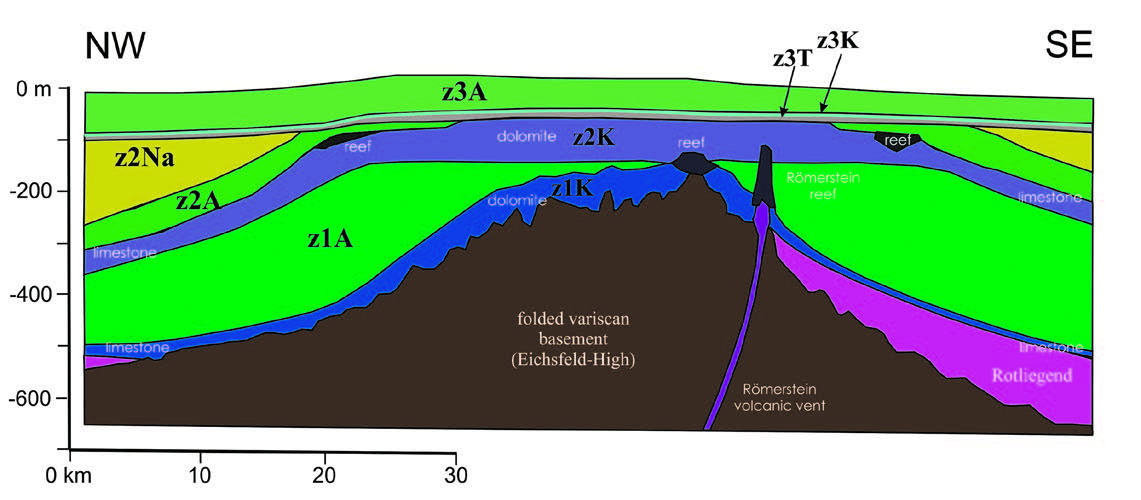Permski kras v sadri ob južnem robu gorovja Harz (Nemčija), vpliv tektonike na regionalno geologijo in kraško hidrogeologijo
DOI:
https://doi.org/10.3986/ac.v49i1.8965Ključne besede:
gorovje Harz, južni pas gorovja Harz, tektonika, Zechstein, zgornji perm, regionalna geologija, kraška hidrogeologijaPovzetek
Gorovje Harz v Nemčiji zajema proti jugu nagnjene in v varistični orogenezi nagubane devonijske in karbonske kamnine, ki so na svoji južni meji narinjene na mezozojske sedimente. Ob južnem delu tega gorovja v širokem pasu izdanjajo navzgor ležeče nenagubane zgornjekarbonske, permske in spodnjetriasne (Buntsandstein) serije. Te vključujejo debelo zaporedje zgornjepermskih (Zechstein) evaporitnih kamnin, ki vpadajo za približno 10° proti J do JZ. To je skoraj kontinuiran sulfatni in karbonatni kraški teren, ki je dolg približno 90 km in se razteza na površini 338 km². V disertaciji je prvi avtor naredil novo geološko karto Zechsteina v merilu 1 : 10.000 in prikazal tektonski model, s čimer je nadgradil razumevanje kraških pojavov. Zakrasevanje je značilno za morfologijo južnega Harza in vključuje več kot 180 registriranih jam, tisoč in več vrtač ter uvale, ponore in velike kraške izvire. Kaže se, da nizi vrtač sledijo prelomom. S podrobnim kartiranjem treh najnižjih zechsteinskih ciklov se je razkrila gosta mreža prelomov. Prelomi smeri 85° do 125°, ki so nastali v zgornji kredi med kompresijsko fazo dviganja Harza, se pojavljajo vsakih nekaj 500 m. Veliko teh prelomov je reverznih prelomov z narivi proti severu. To povzroča, da se vidne plasti ponavljajo in se tako izdanek Zechsteina razširi mnogo bolj, kot le zaradi samega vpada plasti. V drugih delih terena najdemo strukture, kot sta horst in udorina, v kilometer dolgih spodnjetriasnih Buntsandsteinskih hrbtih. Pod površjem teče podtalnica proti jugu, skladno z vpadom in v smeri slemenitve, kar povzroča slemenitvi vzporedne nize depresij, dolin in vrtač. V zadnji fazi ekstenzije so prelomi smeri 150° do 180° povzročili strukturne udorine, zaradi česar podtalnica in površinske reke tečejo proti jugu in sekajo strmo pobočje spodnjega Buntsandsteina. Tektonska struktura južnega Harza določa hidrologijo in površinske kraške pojave. Tektonske razmere treh največjih kraških izvirov Salza v Försteju, Rhume in Salza v Nordhausenu so predstavljene skupaj s plitvimi kraškimi pogoji območij Hainholz/Beierstein, Trogstein in Hainrode.
Prenosi

Prenosi
Objavljeno
Kako citirati
Številka
Rubrike
Licenca

To delo je licencirano pod Creative Commons Priznanje avtorstva-Nekomercialno-Brez predelav 4.0 mednarodno licenco.
Avtorji jamčijo, da je delo njihova avtorska stvaritev, da v njem niso kršene avtorske pravice tretjih oseb ali kake druge pravice. V primeru zahtevkov tretjih oseb se avtorji zavezujejo, da bodo varovali interese založnika ter da bodo povrnili morebitno škodo.
Podrobneje v rubriki: Prispevki




